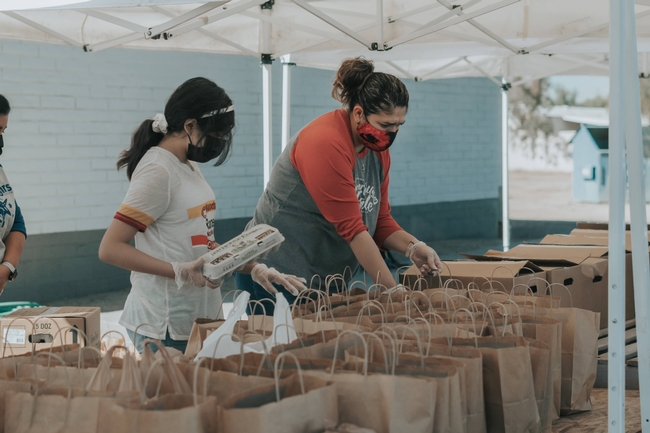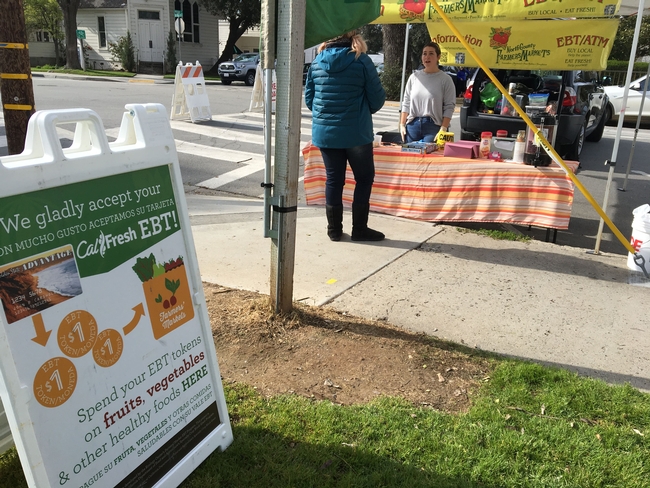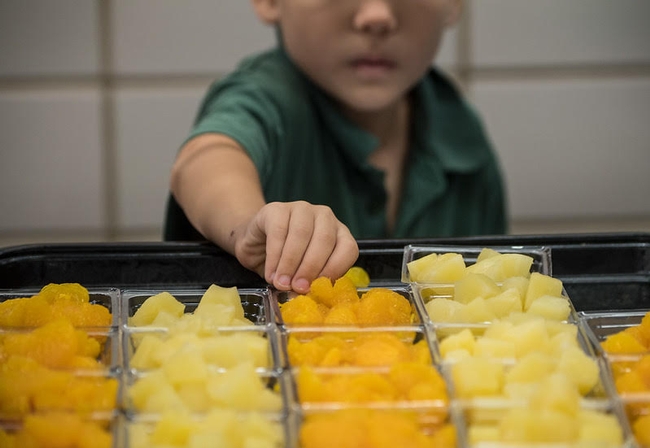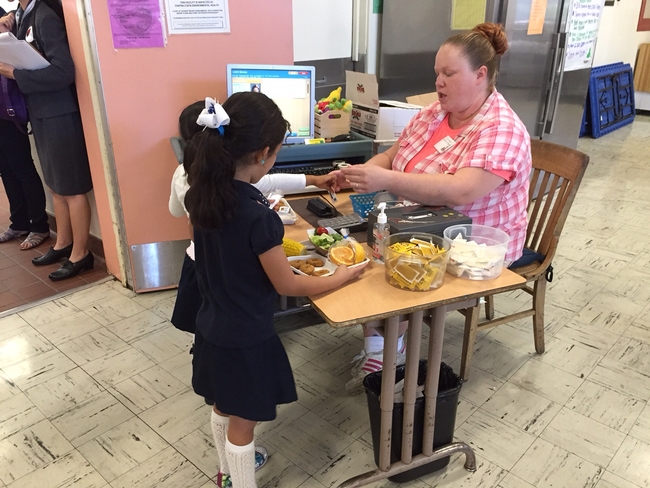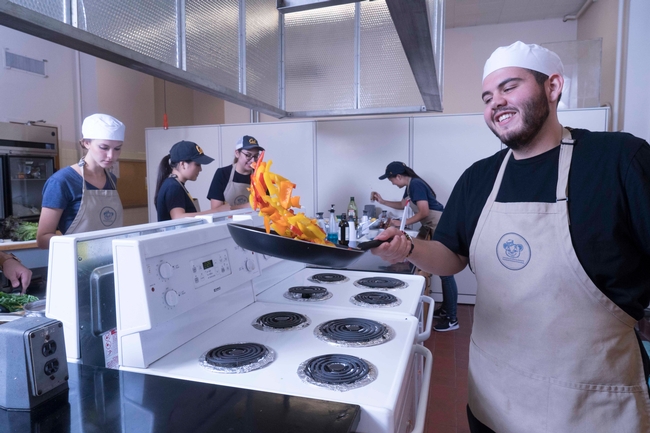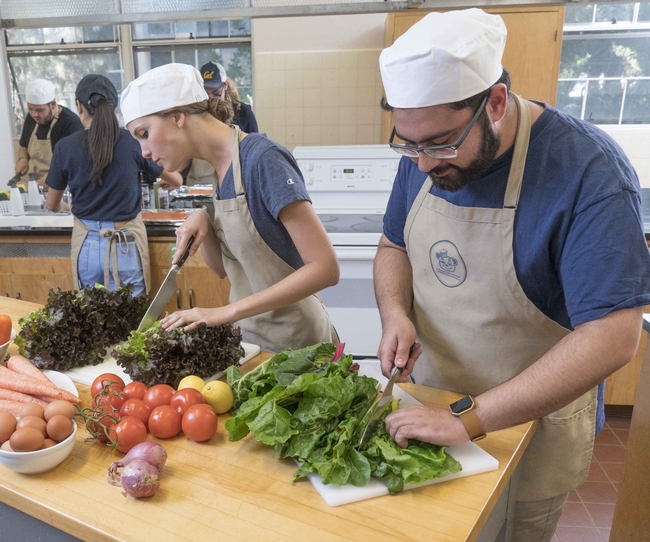Posts Tagged: food security
Global food security threatened by grain export disruptions
Wheat and corn prices have spiked after Russian aggression in the Black Sea
The Russian invasion of Ukraine in early 2022 caused wheat and corn prices to spike 30% and 13%, respectively, and threatened a worldwide food crisis. International efforts to mitigate a food security crisis via the Solidarity Lanes and the Black Sea Grain Initiative (BSGI) have successfully allowed grain exports out of Ukraine. However, Russia's recent withdrawal from the BSGI, coupled with increased bombings of Odesa and Danube River ports, caused another price spike for these grains. Further aggression in the region risks halting Russian wheat and Ukrainian corn exports across the Black Sea, the main export channel for both countries.
Russia accounts for about 18% of global wheat exports and 2% of worldwide corn exports, while Ukraine provides 15% of global corn exports and only 9% of wheat. Why have these statistics spooked the grain commodity markets?
“The simple answer is that Russia's aggression in the Black Sea region increases the risk of the world grain market losing the number four corn exporter, Ukraine, and the number one wheat exporter, Russia, if grain vessels on the Black Sea become targets of drone strikes,” said Colin A. Carter, Distinguished Professor of Agricultural and Resource Economics at the University of California, Davis. If all grain shipped through the Black Sea by Russia and Ukraine were halted, it would cut off 27% of global wheat exports and 17% of global corn exports.
Analysis of the corn and wheat markets by Carter and Sandro Steinbach, associate professor in the Department of Agribusiness and Applied Economics and the Director of the Center for Agricultural Policy and Trade Studies at North Dakota State University, shows a notable increase in market uncertainty since the start of the Russia-Ukraine War, as evidenced by measuring "implied volatility." Implied volatility is the expected price volatility of a commodity like corn or wheat in options trading. In March of 2022, shortly after the invasion of Ukraine, the implied volatility of corn jumped from 25% to 60%, while wheat rose from 40% to 160%. There was also a second peak in volatility in July 2023, after Russia pulled out of the BSGI, suggesting further fears that grain exports through the Black Sea could be cut off from world markets.
When Russia withdrew from the BSGI, there was another brief price spike in wheat (up 15%) and corn (up 10%). Wheat markets have been consistently more affected by conflict in Ukraine, specifically in the Black Sea, than corn prices. This difference can be explained by the fact that 95% of Russian grain is exported through the eastern portion of the Black Sea, while around a quarter of Ukrainian grain is shipped by truck and rail and would not be as affected by the conflict in the Black Sea. By volume, there is around 1.7 times more wheat than corn shipped from Black Sea ports. The wheat market is more politically charged than the corn market because wheat is primarily a food grain. Therefore, the greatest risk to global food security moving forward may no longer be getting grain out of Ukraine – due to the continued success of the Solidarity Lanes – but rather the loss of wheat exports to the world market that could result from Russia backing out of the Black Sea Grain Initiative.
To learn more about how Russian aggression in the Black Sea might affect global food security, read the full article by Carter and Steinbach, “Russian Weaponization of Food Rattles Global Markets,” ARE Update 26(6): 1–4. UC Giannini Foundation of Agricultural Economics, online at https://giannini.ucop.edu/filer/file/1694637435/20778/.
ARE Update is a bimonthly magazine published by the Giannini Foundation of Agricultural Economics to educate policymakers and agribusiness professionals about new research or analysis of important topics in agricultural and resource economics. Articles are written by Giannini Foundation members, including University of California faculty and Cooperative Extension specialists in agricultural and resource economics, and university graduate students. Learn more about the Giannini Foundation and its publications at https://giannini.ucop.edu/.
UC ANR experts offer counsel as CalFresh benefits shrink, participants face hunger
Reduction of SNAP benefit deepens crisis of inflation, high cost of living, low wages
Starting this month, many of the estimated 3 million people in the CalFresh program – California's version of SNAP (Supplemental Nutrition Assistance Program) – will be facing hunger and making difficult decisions to meet their most basic needs. In late March, participants received the last of the pandemic-related emergency aid that significantly boosted their monthly benefits. The reduction varies by household size and income; for example, in April a single-person household could see a drop from $281 per month to $23.
“The emergency food allotments had a tremendous impact in our communities and across the nation,” said Shannon Klisch, academic coordinator for the Youth, Families and Communities Program for UC Cooperative Extension in San Luis Obispo and Santa Barbara counties. “One study estimated that these allotments kept more than 4 million people out of poverty across the U.S. in the last quarter of 2021, and reduced child poverty by 14%.”
SNAP increases during the pandemic made many Californians more food-secure, with some participants reporting that their allotments finally had been enough to feed their families for the month, according to Wendi Gosliner, a project scientist at the Nutrition Policy Institute (a program of UC Agriculture and Natural Resources). But, with the benefit reductions, food insecurity is emerging again as a serious concern.
“It is inconceivable that a nation this wealthy should have so many people experiencing hunger,” Gosliner said. “And here in California, with the high cost of living, ongoing inflation and extreme income and wealth disparities, people are being forced to explore every possible avenue just to feed themselves and their families.”
To help ensure they are receiving the maximum allotment, Klisch recommends that CalFresh participants – especially those who applied during the pandemic and are relatively new to the program – double-check their information.
“If the county doesn't have your most up-to-date information, call your county worker if you've changed your address, if you've experienced decreased income, if your housing costs have gone up, or if you have new expenses – like child or dependent care expenses or medical expenses – these can help you qualify for more CalFresh funds,” she explained.
For families with school-aged children, Klisch said they can stretch their food dollars and promote healthy eating by encouraging their children to eat breakfast and lunch at school through California's universal free school meals, and all families with children under 18 can watch for the next issuance of the P-EBT (Pandemic EBT) card, worth potentially hundreds of dollars.
In addition to these options for food assistance, Klisch pointed to programs that can help people save money on other household expenses, such as California Alternate Rates for Energy Programs (CARE) and Affordable Connectivity Program. Local food banks are also gearing up across the state to handle an expected surge in clients in need of emergency food; a list of California food banks can be found at cafoodbanks.org/our-members.
“We ask a lot of low-income families and workers to navigate and piece together various programs, applications, and benefits when we don't commit to a strong safety net,” Klisch said. “On the other hand, when people have enough money for food, everyone benefits through decreased health care costs and increased economic activity.”
Gosliner also said that people should look into their eligibility for WIC (Special Supplemental Nutrition Program for Women, Infants and Children), as well as the federal Earned Income Tax Credit (EITC) and CalEITC, poverty-alleviation benefits underused by Californians.
“People should make sure they are accessing all the safety net benefits for which they are eligible,” Gosliner said.
Market Match, other nutrition incentive programs can help
Through programs like Market Match, available at about 300 farmers markets across California affiliated with the Ecology Center, CalFresh participants can have their EBT benefits “matched” by their local market (usually up to $10 or $15 per visit).
“People are looking to get creative about how to stretch their food dollars, and Market Match is one way to do that,” said Klisch, who has led UCCE efforts to help promote the program along the Central Coast since 2017.
Striving to expand access to fresh fruit and vegetables and to support local farms, UCCE and CalFresh Healthy Living, UC worked with partners to increase CalFresh redemption at farmers markets in San Luis Obispo and northern Santa Barbara counties.
In 2017, about $48,000 in CalFresh and Market Match benefits were redeemed at farmers markets in the area. In 2022, the total was more than $207,000 – a 327% increase. According to Ecology Center figures for the entire state, CalFresh and Market Match spending at farmers markets jumped 161% from 2019 to 2021, up to $13 million.
Gosliner, whose research has shown that these nutrition incentive programs are associated with increased food security, noted that “the people who use Market Match absolutely love the program and feel it is incredibly helpful.” She also added that the California Department of Social Services is developing a pilot program that would offer match incentives for purchasing fruits and vegetables at larger food retailers.
Although the biggest of its kind, Market Match is just one of the programs across California that provide “matches” for healthy food purchases under the California Nutrition Incentive Program, which in turn is primarily funded by GusNIP (the nationwide Gus Schumacher Nutrition Incentive Program).
GusNIP dollars – and SNAP overall – are governed by the federal Farm Bill, typically renewed every five years and currently being negotiated by Congress.
Fewer than 10% of patients screened for food insecurity during pandemic
Study finds even fewer screened during virtual appointments
As jobless rates rose during the COVID-19 pandemic, millions more Americans experienced food insecurity because they lacked consistent access to food. National health organizations recommend primary care providers screen patients for food insecurity, since not having access to enough food can lead to chronic diseases.
But research from the University of California, Davis, finds that only 7% of primary care providers screened patients for food insecurity. If the appointment was virtual or telehealth, only 3% asked patients about their access to food. The American Journal of Preventive Medicine published the research.
“These rates are surprising and seem relatively small in comparison with what seems like a growing awareness of food insecurity during the pandemic,” said lead author Cassandra Nguyen, an assistant professor of Cooperative Extension in the UC Davis Department of Nutrition.
She said the findings may indicate that health care providers were prioritizing emergency responses to COVID-19. The research showed that once people had access to COVID-19 vaccines, screening for food insecurity increased to 10%.
Barriers to telehealth screenings
Screening for food insecurity at telehealth appointments remained low even after vaccines became available. Nguyen said that may suggest telehealth appointments have unique barriers.
“One of those barriers could be a concern about privacy and whether the patient is alone or feels comfortable discussing a potentially stigmatizing experience such as food insecurity. This may deter a primary care provider from asking about it,” Nguyen said.
Screening might also be more difficult if patients aren't familiar with the technology needed or if there are technological disruptions during telehealth appointments. Nguyen said more study is needed about potential barriers given the increased popularity of telehealth appointments since the pandemic.
The research examined electronic health records and clinic data from a national network of more than 400 community health centers in 16 states. It examined encounters between March 11, 2020, and Dec. 31, 2021. Screening typically involves a primary care provider asking the patient to answer that either or both of the following two statements is often true or sometimes true:
- Within the past 12 months we worried whether our food would run out before we got money to buy more.
- Within the past 12 months the food we bought just didn't last and we didn't have money to get more.
Co-authors include Rachel Gold with OCHIN Inc. and Kaiser Permanente Northwest Center for Health Research; Alaa Mohammad, Dedra Buchwald and Clemma Muller with Washington State University; Molly Krancari, Megan Hoopes and Suzanne Morrissey with OCHIN Inc.
The National Center for Advancing Translational Sciences of the National Institutes of Health, and the National Institute of Diabetes and Digestive and Kidney Diseases supported the research.
Universal school meals increased student participation, lessened stigma
The COVID-19 pandemic exacerbated food and nutrition challenges. Many families initially lost access to meals offered by school and childcare facilities, experienced unemployment or work reductions, and faced increasing prices for food and other necessities. National and state policies and programs provided food and cash assistance to mitigate impacts on food security. Researchers at the Nutrition Policy Institute, a research center of University of California Agriculture and Natural Resources, evaluated safety-net policies implemented during the pandemic to better support families with low incomes in the U.S.
Benefits of universal school meals
The National School Lunch Program and the School Breakfast Program meet the nutritional needs of approximately 30 million K-12 students in America each day. Typically, students from families meeting income eligibility criteria receive school meals for free or a reduced price, while others pay full price.
NPI researchers Wendi Gosliner, project scientist, and Lorrene Ritchie, director and UC Cooperative Extension specialist, are co-leading studies of school meals in California in collaboration with researchers from the NOURISH Lab for Health Inclusion Research and Practice, who study school meals in Maine and other states.
During the COVID-19 pandemic, Congress funded school meals for all students at no charge, in order to address the dramatic increase in food insecurity among families with children after schools shut down in March 2020. This federal provision allowing for meals to be free for all students ended after the 2021-2022 school year, but some states elected to continue providing universal school meals with state funding, in recognition of the importance of these meals for student health and academic success.
California was the first state to adopt a statewide Universal Meals Program starting in the 2022-23 school year. To support the program's development, $650 million were invested to help schools improve kitchen infrastructure and provide staff training and technical assistance. Investments include Farm to School programs and other mechanisms to help update and improve school meals. Maine and several other states also have adopted universal school meals at least through the 2022-23 school year.
“States often act as incubators – things that work well in states sometimes get translated into federal policy,” Gosliner said. Identifying the success of the programs – and their challenges – can lead to improvements and help inform advocates and policymakers considering universal school meals policies at the state and national level.
Two of the team's research studies in California and Maine documented the benefits and challenges of universal school meals, as reported by school food authorities. Among 581 school food-service leaders in California who responded to the survey, nearly half (45.7%) reported reductions in student stigma as a result of providing free school meals to all students. Among 43 respondents in Maine, over half (51%) reported lessened stigma related to school meals being free for all. In both studies, nearly three-quarters of respondents reported increases in student meal participation. These and other data suggest that universal school meals are meeting their aim, to increase student participation while providing nutritionally balanced meals.
But when the child leaves campus, the responsibility to put a nutritious meal on the table falls on the caregiver.
“Universal school meals provide food and can ease families' budgets, but for too many families, wages as well as time and other resources are not adequate for access to and consumption of enough healthy foods and beverages,” Gosliner noted.
That is when other public programs are helpful, for example the Earned Income Tax Credit, or EITC.
Many eligible families do not claim Earned Income Tax Credit
The Earned Income Tax Credit is a national program designed to lift families out of poverty. The supplemental income can contribute up to nearly $7,000 per year for a family. Despite the EITC's known ability to improve participants' health, research shows that many EITC-eligible households in California and across the nation don't receive the benefits for which they are eligible, leaving $2 billion unclaimed in California in 2018 alone.
Gosliner led a study along with Lia Fernald from UC Berkeley and Rita Hamad from UC San Francisco to document levels of awareness, barriers to uptake, and benefits of participation in the EITC. Their recent publication reported that among 411 EITC-eligible California female caregivers, those who were younger, spoke languages other than English, and had less awareness of the EITC were less likely to receive the tax credit.
Developing a user-friendly system for providing safety-net support and, in the meantime, providing information and support to help more EITC-eligible families receive these benefits are suggested to help alleviate financial stressors. In the long term, these strategies may reduce poverty and improve the health of children.
Increasing WIC Cash Value Benefit a boon to health
In addition to universal school meals and EITC, families with low income may be eligible for the Special Supplemental Nutrition Assistance Program for Women, Infants and Children, or WIC. The program supports women and children up to 5 years old through nutrition education, nutritious foods and access to other health and social services.
One component of the WIC food packages, the Cash Value Benefit, provides participants a fixed dollar amount to supplement their family's diet with fruits and vegetables. During the pandemic, the U.S. Department of Agriculture increased this benefit from $9 to $35 per month, which was later revised to $24 per month per child in October 2021.
Ritchie contributed to a growing body of evidence on the importance and multidimensional benefits of the WIC Cash Value Benefit increase.
“Nine dollars buys only a quarter of what a child is recommended to eat every day,” Ritchie said. “The increase in Cash Value Benefit during the pandemic was an ideal natural experiment to investigate its impact.”
In collaboration with Shannon Whaley and her team at the Public Health Foundation Enterprises-WIC, NPI launched a longitudinal cohort study of nearly 2,000 California WIC participants. They found that the increased Cash Value Benefit improved WIC participant satisfaction with the program and allowed families to purchase greater quantities and varieties of fruits and vegetables.
“The increased Cash Value Benefit enabled WIC families to expose young children to new fruits and vegetables. Early exposure to a variety of fruits and vegetables is critical to establishing lifelong healthy habits,” said Ritchie.
The researchers found that the benefit increase also reduced food insecurity. It is hoped that the increase in program satisfaction translates into more eligible families enrolling and continuing to receive WIC. In November 2022, the U.S. Department of Agriculture proposed making the increased Cash Value Benefit a permanent part of WIC.
Knowing the proven benefits of the WIC program, Ritchie and colleagues from the National WIC Association, and Loan Kim at Pepperdine University, also engaged with WIC participants in other states.
In 2021, all state WIC agencies were invited to participate in a WIC satisfaction survey. Of the 12 WIC state agencies that opted to participate, Connecticut, Inter Tribal Council of Arizona, Nevada, New Hampshire and New Mexico added questions on the survey to understand how the increased Cash Value Benefit impacted children's dietary intake.
The study showed consumption of fruits and vegetables by children on WIC increased by one-third cup per day on average, which is sizable when considering the impact across the WIC population.
NPI research on universal school meals, the EITC and WIC constitute a small part of a more comprehensive approach to make healthy food more accessible, affordable, equitable and sustainable for all. The NPI provides resources such as policy briefs, peer-reviewed publications and technical assistance on several research areas such as safe drinking water, childcare and education. To learn more, please visit the Nutrition Policy Institute website.
Teaching Kitchen course helps improve college students’ food security
Cooperative Extension researcher: Nutrition course a boon for UC Berkeley students
College students across the nation are struggling to meet their basic food needs. Within the University of California system of 280,000 students, 38% of undergraduate students and 20% of graduate students report food insecurity.
As part of the UC Global Food Initiative, in 2015 the Nutrition Policy Institute (a UC Agriculture and Natural Resources statewide research center) identified student food insecurity as a UC systemwide problem, prompting the UC Regents and campuses to collectively address the issue.
All 10 UC campuses now have on-site basic needs centers, providing food, emergency housing and support services. The UC system and campus working groups recognize that meeting basic needs, such as food, is a multidimensional challenge.
In response to the 2022 White House Conference on Hunger, Nutrition, and Health, which called for national efforts to reduce diet-related disease and food insecurity, UC renewed their commitment to cut the proportion of students facing food insecurity in half by 2030. Campuses will partner with local counties to maximize enrollment in the Supplemental Nutrition Assistance Program (also known as CalFresh in California), provide food for students who do not qualify for CalFresh, and allocate campus food resources to historically underserved student populations.
NPI's collaborative researchers continue to monitor the impact of these efforts, in addition to other interventions, such as supporting students in building basic culinary skills, to improve food security. One multipronged approach to address food insecurity at UC Berkeley is a 14-week course on Personal Food Security and Wellness with a Teaching Kitchen laboratory component.
Sarah Minkow, who teaches the Personal Food Security and Wellness course at UC Berkeley, shared that students learn about nutrition and gain culinary skills through the Cal Teaching Kitchen.
The curriculum is designed with consideration for the time, cost and convenience of healthy eating. Discussions include food safety, calculating nutrient needs, mindful eating and reading nutrition labels. The Teaching Kitchen laboratory brings the lessons to life through knife skills, “no-cook” cooking, microwave cooking and sheet pan meals.
Minkow enthusiastically highlighted her students' “overwhelmingly positive [response to the] lecture and lab,” suggesting the benefits of an interactive learning environment to garner student engagement.
“Students often give feedback that they wish this was a required course for all UC Berkeley students,” said Minkow. She noted one barrier to reaching more students: capacity of the Teaching Kitchen space.
Susana Matias, a Cooperative Extension specialist at the UC Berkeley Department of Nutritional Sciences and Toxicology and collaborative researcher with the NPI, evaluated the impact of the Personal Food Security and Wellness course at UC Berkeley.
Matias reported that increasing food literacy and culinary skills among students has shown to increase intake of fruits and vegetables, and frequency of cooking, and reduce the number of skipped meals. Her study on the impact of the 14-week nutrition course also found a significant decrease in student food insecurity.
Across the UC System, students are benefiting from their campus Teaching Kitchens, including UC Berkeley, UC Davis, UCLA and UC Riverside. Other campuses such as UC San Diego, UC San Francisco, UC Santa Cruz and UC Santa Barbara offer basic student cooking classes as well.
Katherine Lanca, UC Global Food Initiative fellow working with NPI, attended the 2022 Teaching Kitchen Research Conference as part of her fellowship to learn about the latest research on teaching kitchens supporting equitable health outcomes.
The conference was hosted at UCLA by Harvard T.H. Chan School of Public Health Department of Nutrition in association with the Teaching Kitchen Collaborative. Teaching kitchens are a promising approach to supporting food security and cultivating lifelong habits, especially among a college student population.


